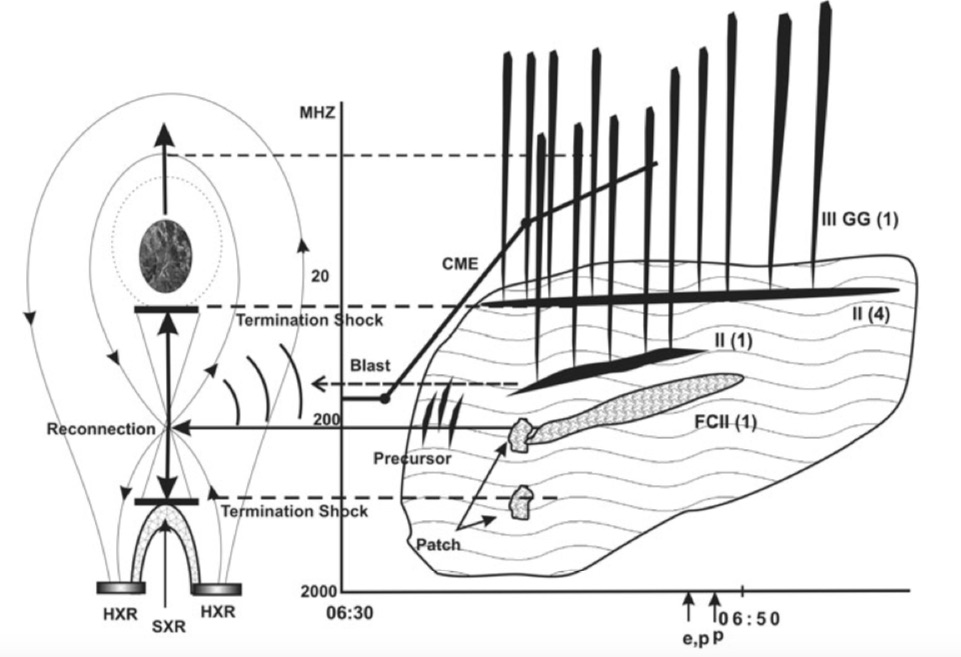
Bouratzis, C., P. Preka-Papadema, A. Hillaris, P. Tsitsipis, A. Kontogeorgos, V. G. Kurt, and X. Moussas, Radio Observations of the 20 January 2005 X-class Flare, Sol. Phys., 267, 343-359 (2010) (ADS)

(click on the image for a larger version)
Date: 2020 April 03
An exuberant illustration of the zoo of activity tracers found in radio spectrograms (the right side of the diagram, where what look like exclamation points represent type III radio bursts). See also an earlier description of these things. Here the idea is to cross-link the radio spectral features with the elements of the CSHKP cartoon. The reader must go to the actual paper for the definitions of the various types, noting that many of them (for example, those III GG bursts) remain controversial. In fact, the solar radio community (long-wavelength branch) is rather notorious for heated debates about physical interpretation, probably because at these long wavelengths refraction and scattering blur out the images so much that these fine details can't readily be linked to image features very directly.
Note that the termination shock, an obvious prediction of CSHKP, has only recently been identified with any certainty.
This is a good example of a roadmap cartoon.